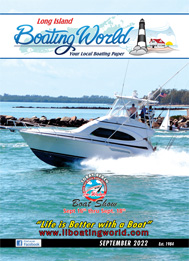
The History of the Ship’s Compass … A compass is a device that indicates direction. It is one of the most important instruments used for navigation on land, over the seas, and in the atmosphere. Ironically, even though it all happened centuries ago, the name of its inventor is not known. However, many historians think that the Chinese may have been the first civilization to develop a magnetic compass and, that this may have occurred in the 11th or 12th centuries … The History of the Compass … Soon after its invention in China, the compass was adopted by Europeans … In fact, the explorer Marco Polo faced many obstacles on his way from Venice to Kublai Khan’s court in China. His maps were rudimentary and, on many occasions, he found himself literally in uncharted territory. So how did he know the paths he should take? … He had a Compass!!! This occurred between 1271 and 1295 … The First Compasses … These were made using Loadstone, which is a naturally magnetized iron stone. This occurred during the Han dynasty in China. Over time, loadstone compasses became known as “South Pointing Fish”. Initially, loadstone compasses were only used for land navigation. Soon afterward, its use for both land and sea navigation began. Over time, the technology used to develop compasses shifted to using iron needles that were magnetized by striking them with a lodestone. Compasses using magnetized needles were described in medieval European documents around 1190. Later, the use of a compass was found within Islamic parts of the world as well … Magnetic Compasses … are the most well-known type of compass. They have become so popular that the term “compass” almost always refers to a magnetic compass. While the design and construction of this type of compass have changed significantly over the centuries, the underlying concept of how it works has remained the same … The compass has been a very important tool for mariners, and other explorers for centuries … The Parts of a Compass … A compass consists of a magnetized needle that is allowed to rotate so it lines up with the earth’s magnetic fields. The ends of this needle will point to what is known as magnetic north and magnetic south. Scientists and historians don’t know when the principles behind magnetic compasses were discovered: however, it is known that the ancient Greeks understood magnetism as early as 2,000 years ago. It is thought that Chinese scientists may have known that rubbing an iron bar (such as a needle) with a naturally occurring magnet called a lodestone, would temporarily magnetize the needle so that it would point to the north or south … Very Early Compasses … These were made from a magnetized needle attached to a piece of wood or cork that floated freely in a dish of water. Once the needle settled, the colored end would point toward magnetic north. As scientists learned more about magnetism, the compass needle was mounted and placed in the middle of a card that showed the Cardinal Directions … North, South, East, and West. This methodology can still be seen today … One of the earliest known references to lodestone’s magnetic properties was made in the 6th century BC … Ancient Greeks credited Greek philosopher Thales of Miletus with discovering lodestone … The earliest Chinese literary reference to magnetism occurs in the 4th-century BC Book of the Devil Valley Master Guiguzi … One of the Greatest Inventions and a Very Important Tool for Navigation in the Air, On the Water, and Across Land … The compass was invented by the Chinese and adopted by Europeans around 1300. It had three major elements. The first one is a freely pivoting needle that stands on a pin and is enclosed in a box that has a glass cover and a wind rose that has cardinal directions – North, East, South and West. That box is placed inside a gimbal so it can rotate freely and that system is then placed in another gimbal. Using this method, the magnetic needle can always stay horizontal if weighted on the bottom. A bearing compass is a magnetic compass that is used to measure a bearing: the angle between its forward direction and the direction from it to some other object. It is used for making land maps, nautical charts, and aeronautical charts. Its variants are the surveyor’s compass and the prismatic compass. The liquid compass is a type of compass for navigation in which the magnetized needle or card is immersed in the fluid which gives a more stable reading. This method is a direct descendant of the first Chinese compasses. Today, compasses are used everywhere; from cars to boats, to aircraft, and rockets. A compass is a navigational instrument for determining direction relative to the Earth’s magnetic poles. It consists of a magnetized pointer that is free to align itself with the Earth’s magnetic field. The compass has greatly improved the safety of travel, especially ocean and air travel …
Remember, Smart Boating is Safe boating!!!
